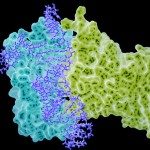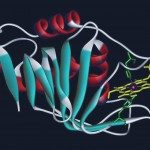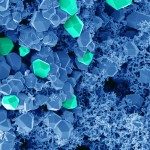Présentation
Detailed information on drug-target interaction is a prerequisite in academic and industrial programs of drug dicovery and hit-to-lead optimization. We present a new approach that combines NMR and docking to characterise drug-target interactions at the atomic level in the context of whole living cells. This is possible by making use of a ligand-based in cell NMR method, which validates the drug-target interaction and identifies the network of atoms involved in this interaction. This strategy does not require any extraction or purification of the target, which can be very large, can be part of a complex, or can be embedded in the membrane of a whole cell. The novel method identifies a whole ensemble of conformations of the drug bound to the target, which, together, account for the experimental data and are responsible for affinity and specificity of the drug for the target.
The analysis method is based on a standard small molecule-receptor docking approach followed by clustering by the Self-Organising Map algorithm. The novelty of the method lies in the way the experimental data are taken into account, and how the ensembles of drug poses are identified from a very large set of solutions. The novel analysis is a crucial element in the whole process of identifying the interacting atoms between a drug and its target in the context of an entire living cell.





